Starting a garden for beginners can be easy when you follow these steps. Many people find gardening to be a fulfilling and rewarding experience, but it can be overwhelming for those who are just starting out. By breaking down the process into simple, manageable steps, you can create a beautiful and thriving garden. Whether you’re interested in growing your vegetables, herbs, or flowers, these beginner’s gardening tips will help you get started.
Key Takeaways
- Consider what you want to plant, focusing on easy-to-grow plants like calendula, daylilies, and tomatoes
- Pick the best location for your garden, ensuring it gets 6-8 hours of full sun each day
- Clear the ground by removing weeds and sod or using the lasagna gardening method
- Test and improve your soil by having a soil test done and adding organic matter like compost
- Prepare your planting beds by loosening the soil and mixing in organic matter
- Start planting by sowing seeds directly in the garden or buying young plants to transplant
- Water your garden at the right time, keeping the seeds and seedlings moist but not wet
- Choose the best type of garden for you, whether it’s container, raised bed, or in-ground gardening
- Spend time in your garden each day, observing and managing any problems that arise
- Harvest and enjoy the food you grow, picking young and often to encourage more production
Consider What You Want to Plant
Before you start your garden, it’s important to consider what you want to plant. This will help you determine the right location and soil for your garden. Whether you want to plant a vegetable garden, herb garden, or flower garden, it’s important to choose plants that you and your family will enjoy.
If you’re new to gardening, start small until you know what you’re getting into. This will help you avoid feeling overwhelmed and allow you to gain experience with planting and caring for your plants.
| Types of Plants | Description |
|---|---|
| Vegetables | Easy to grow and provide healthy, fresh produce for you and your family. |
| Herbs | Can be grown indoors or outdoors and add flavor to your cooking. |
| Flowers | Can add color and beauty to your yard, and even attract pollinators like bees and butterflies. |
Once you have decided what type of plants you want to grow, consider the specific varieties that will thrive in your climate, soil, and sunlight conditions. You can do research online or visit a local garden center for advice.
Decide whether you want to grow from seeds or buy young plants to transplant. Starting from seed can be more budget-friendly and allows you to control the entire growing process. Transplants can save time and guarantee a higher chance of success, especially for beginners.
Whatever you decide to plant, make sure you are committed to caring for it throughout the growing season. Water your plants at the right time and provide them with the necessary care such as fertilizing, weeding, and harvesting. Happy planting!
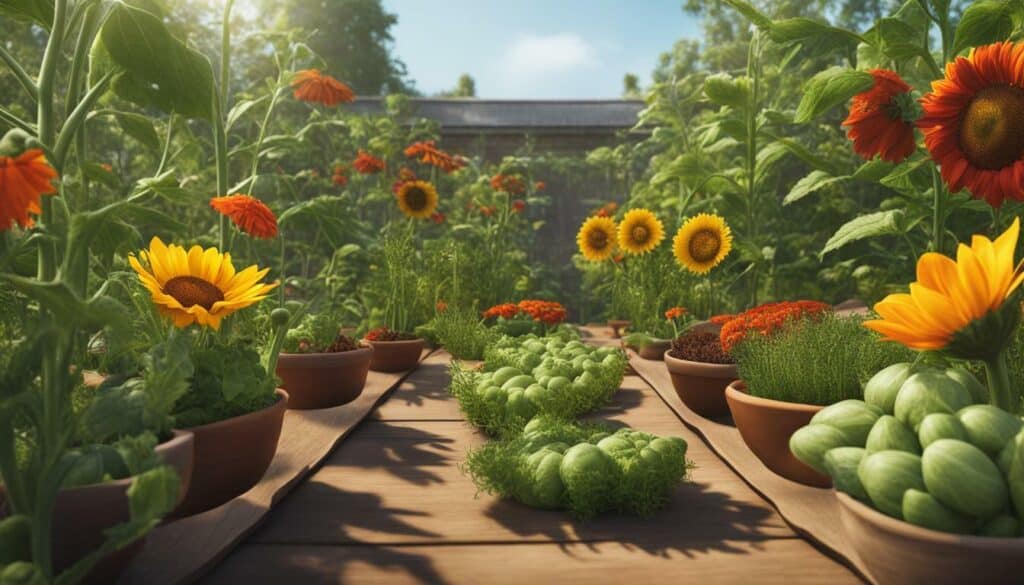
Choose the Best Spot for Your Garden
The location of your garden plays a crucial role in its success, so it’s important to choose the best spot. Firstly, consider what you want to plant in your garden. Different plants have different sunlight and maintenance requirements, so you need to observe your yard throughout the day to determine which spots receive full sun. This information will help you decide where to put your garden.
To ensure the optimal growth of your plants, pick a relatively flat spot with easy access to a water source. If possible, choose an area near your house, so you can easily reach it with a hose or watering can.
Before planting, you need to clear the ground of weeds and sod, either by cutting it out or using the lasagna gardening method. The latter involves layering organic materials like cardboard, leaves, and compost to create a new garden bed on top of the existing grass.
| Tip: | If you’re not sure about your soil’s quality, have a soil test done through your county cooperative extension office. This will determine whether your soil is acidic or alkaline and what nutrients it needs. Adding organic matter such as compost helps to improve the soil structure and fertility, making it the right environment for your plants to grow. |
|---|
Once you have prepared the ground, it’s time to select your plants and start planting them. Keep in mind that some plants can tolerate cold, while others prefer warmer temperatures, so make sure to consider the planting season.
It’s also crucial to water your plants at the right time and take care of them by observing any problems and addressing them promptly. Spend time in your garden each day to observe your plants and ensure they are healthy. By following these steps and taking care of your garden, you’ll be able to enjoy the fruits of your labor by harvesting and using the food you grow.

Clearing the Ground
Before you can start planting, you need to clear the ground for your garden beds. This is an important step in starting a garden. Clearing the ground involves removing weeds and sod from the area you plan to use. There are two methods for clearing the ground: cutting out the sod or using the lasagna gardening method.
To cut out sod, you can slice under the sod with a spade and cut it into sections for easier removal. This method is quicker and is recommended if you want quick results.
The lasagna gardening method involves covering the future garden area with five sheets of newspaper, or double the amount if your lawn is Bermuda grass or St. Augustine grass. Then, spread a 3-inch layer of compost or a combination of potting soil and topsoil on top of the newspaper. Water the area and wait for about four months for the compost and paper to decompose. By starting in the fall, you can have a bed ready to plant in the spring with no grass or weeds and nutrient-rich soil.
Once the ground is cleared, it is important to test and improve the soil. Soil tests can be done through a county cooperative extension office to determine the nutrient levels and any deficiencies in your soil. Adding organic matter, such as compost, to the soil can help improve its fertility and drainage. If using raised beds, you can fill them with a mix of compost, peat moss or coconut coir, and vermiculite.
After clearing and improving the ground, you can then prepare the planting beds by loosening the soil and mixing in the organic matter. This can be done with a rototiller or by hand digging, depending on the size of the beds. It is important to work the soil when it is moist enough to form a loose ball but dry enough to fall apart when you drop it. Walking on prepared beds should be avoided as it can compact the soil.
Once the ground is cleared and prepared, you can choose the plants you want to grow based on your preferences and the climate and sun exposure of your garden area. It is recommended to start small and choose plants that are suitable for your region. You can grow a variety of plants, including vegetables, herbs, and flowers. Planting can be done by sowing seeds directly in the garden or by transplanting young plants into the prepared beds.
Watering is another important aspect of gardening. It is recommended to have a watering system in place, such as a soaker hose or drip line connected to a timer, to ensure consistent watering. Regular monitoring of the garden, including checking for weed growth, pests, and diseases, is also necessary for successful gardening. Harvesting the crops and using the fresh produce in your meals completes the gardening experience.
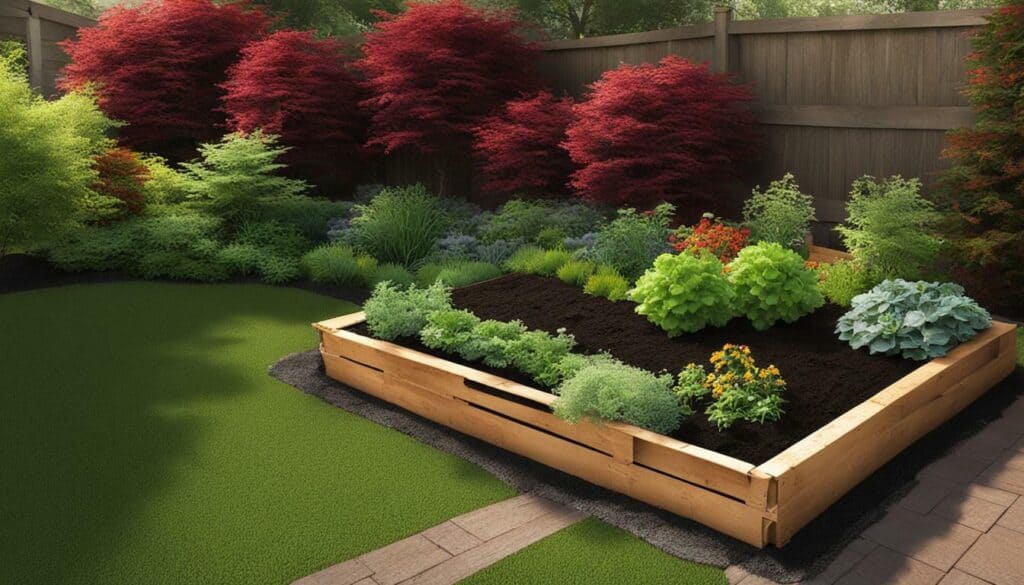
Testing and Improving Your Soil
Good soil is essential for a thriving garden, so it’s important to test and improve your soil. Conducting a soil test can help you understand the composition of your soil and identify any deficiencies or imbalances in nutrients. You can get a soil test kit from a DIY store or contact your county cooperative extension office for a soil test.
The test results will guide you on how to amend your soil and improve its fertility. One of the most effective ways to improve soil health is by adding organic matter like compost. This will enrich the soil and provide essential nutrients for plant growth. When starting a new garden bed, adding a 2-3 inch layer of compost to the soil can greatly improve its quality. If you’re working with an established bed, leaving the organic matter on the surface will eventually turn into humus with the help of earthworms.
Other factors related to soil health that you should consider include drainage and compaction. Poor drainage or compacted soil can hinder plant growth, so it’s crucial to address these issues. Adding organic matter can help improve drainage and loosen compacted soil.
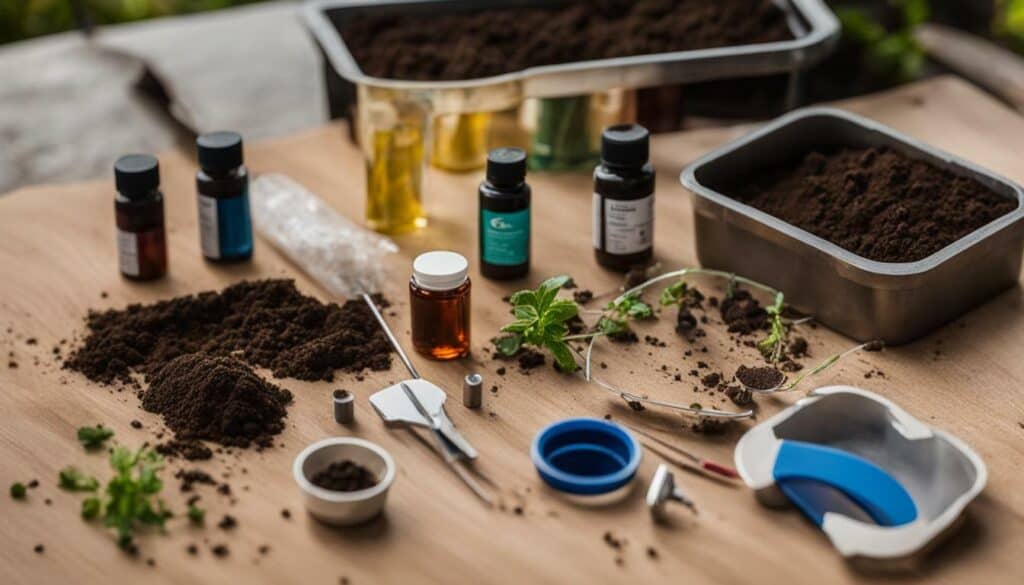
By testing and improving your soil, you’ll be setting the foundation for a successful garden. With healthy soil, your plants will have the nutrients and support they need to grow strong and thrive.
Prepare Your Planting Beds
Once your soil is ready, it’s time to prepare your planting beds for optimal plant growth. Start by loosening the soil using either a tiller or a digging fork to a depth of at least 12 inches. This allows for better root growth and access to nutrients. Avoid over-tilling as this can damage the soil structure.
You can also mix in organic matter such as compost to improve the soil’s texture and fertility. Spread a 2-3 inch layer of compost over the soil and use a rake to work it evenly into the top 6 inches of soil. This will help create a healthy environment for your plants to grow in.
When preparing your planting beds, be sure to consider the spacing needs of your chosen plants. Some plants require more space than others to grow to their fullest potential. Follow the instructions on the seed packets or plant tags to determine the appropriate spacing for each plant.
Once your planting beds are prepared, you’re ready to start planting. Whether you choose to plant from seeds or young plants, make sure to follow the instructions carefully to ensure successful growth.
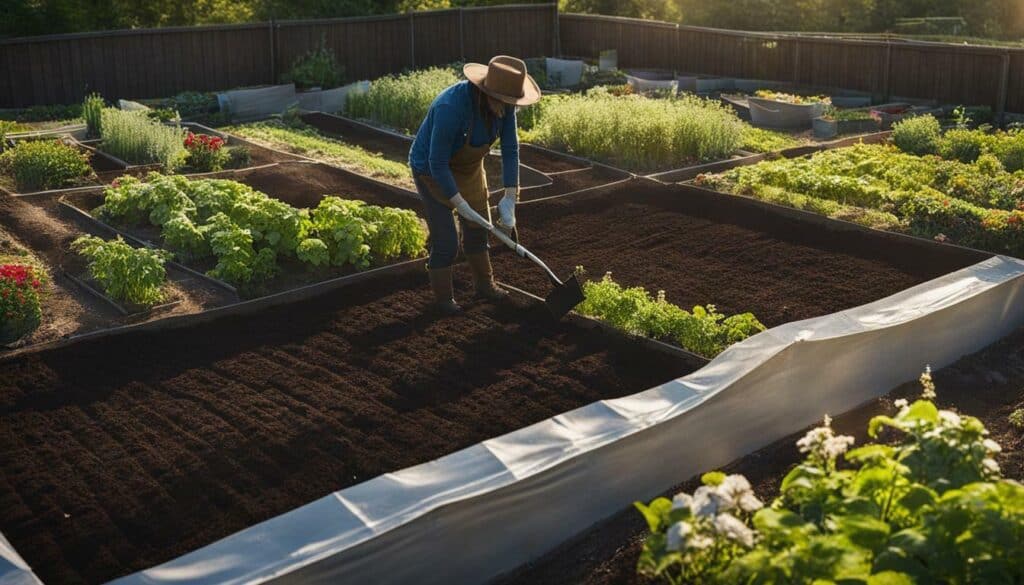
Remember to water your plants at the right time and spend time in your garden each day to care for and observe your plants. With proper preparation and care, your garden will thrive and provide you with a bountiful harvest.
Pick Your Plants
Now comes the fun part – picking the plants for your garden! When selecting plants, it’s essential to consider your preferences and the growing conditions in your area.
First, determine what type of plants you want to grow in your garden. If you want to grow vegetables, choose ones that your family will eat or be willing to try. Consider planting tomatoes, cucumbers, peppers, and lettuce as they are easy to grow and perfect for beginners. If you prefer flowers, decide if you want annuals that bloom all summer or perennials that come back year after year. Some easy-to-grow flowers for beginners include marigolds, zinnias, and petunias.
It’s important to select plants that are adapted to your climate and soil conditions. Check the USDA plant hardiness zone map to determine your area’s minimum and maximum temperatures and find plants that thrive in those conditions. If you’re not sure what to choose, consult gardening catalogs, visit local garden centers, or search online for plants to purchase.
When selecting plants, pay attention to their care requirements. Some plants need full sun, while others can tolerate partial shade. Make sure the plants you select will thrive in the amount of sunlight your garden receives. Also, consider the type of soil you have in your garden and choose plants that can grow in it.
Remember, it’s okay to start small and add more plants as you become more experienced. Don’t be afraid to try new plants and experiment with different growing techniques. Gardening is all about discovering what works best for you and your garden.
Start Planting
With your plants selected, it’s time to start planting in your garden. There are two main ways to plant your garden: from seeds or with young plants, also known as transplants. If you decide to use seeds, follow the planting instructions on the packet and make sure to plant them at the right depth and distance from each other.
Transplants, on the other hand, are already established plants that you can purchase from a garden center or nursery. They can be more expensive than seeds, but they require less time and effort to get started. When planting transplants, make sure to dig a hole that is slightly larger than the container they came in and gently remove them from their pot, being careful not to damage the roots.
It’s important to follow the planting guide specific to your region to ensure your plants have the best chance of success. Planting at the right time is also crucial, so be sure to check the recommended planting dates for your area.
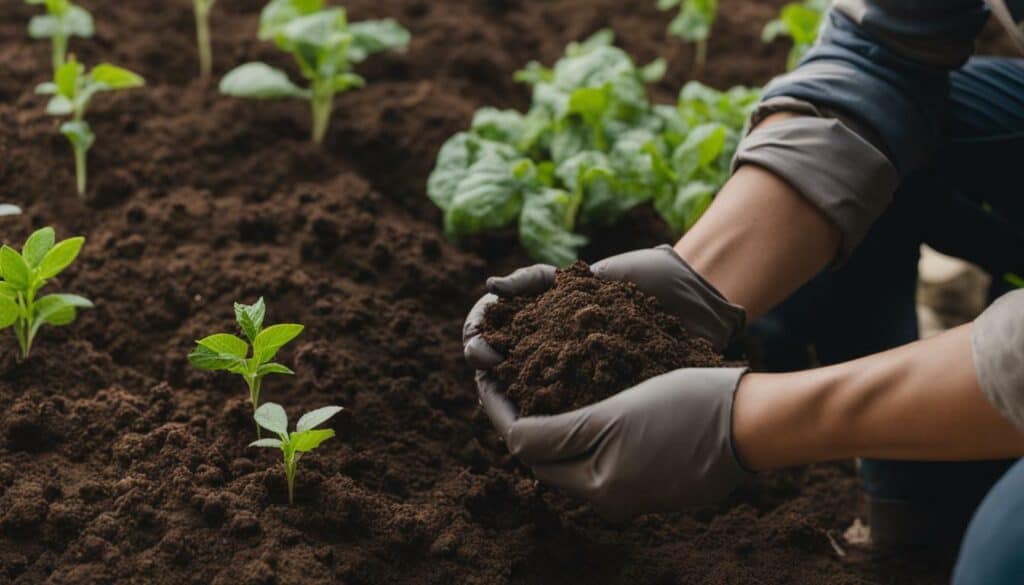
“When planting transplants, make sure to dig a hole that is slightly larger than the container they came in and gently remove them from their pot, being careful not to damage the roots.”
Watering and Providing Nutrients
Proper watering and providing the right nutrients are essential for the success of your garden. Water the plants deeply and infrequently, allowing the soil to dry out slightly between watering. This helps the roots grow deeper into the soil. The frequency of watering depends on the type of soil, temperature, and humidity. Always water early in the morning to minimize evaporation and reduce the risk of fungal diseases.
When it comes to providing nutrients, organic matter is your best friend. Compost, manure, and other natural fertilizers add vital nutrients to the soil, improve soil structure, and increase water-holding capacity. Applying a balanced fertilizer every four to six weeks can also help your plants grow more vigorously and produce higher yields. Be careful not to over-fertilize, as it can burn the roots and harm your plants.
Caring for your garden also involves monitoring your plants for signs of pests and diseases. Remove any diseased or damaged leaves and prune as needed to promote healthy growth. Additionally, consider rotating your crops each year to prevent the build-up of pests and diseases in the soil.
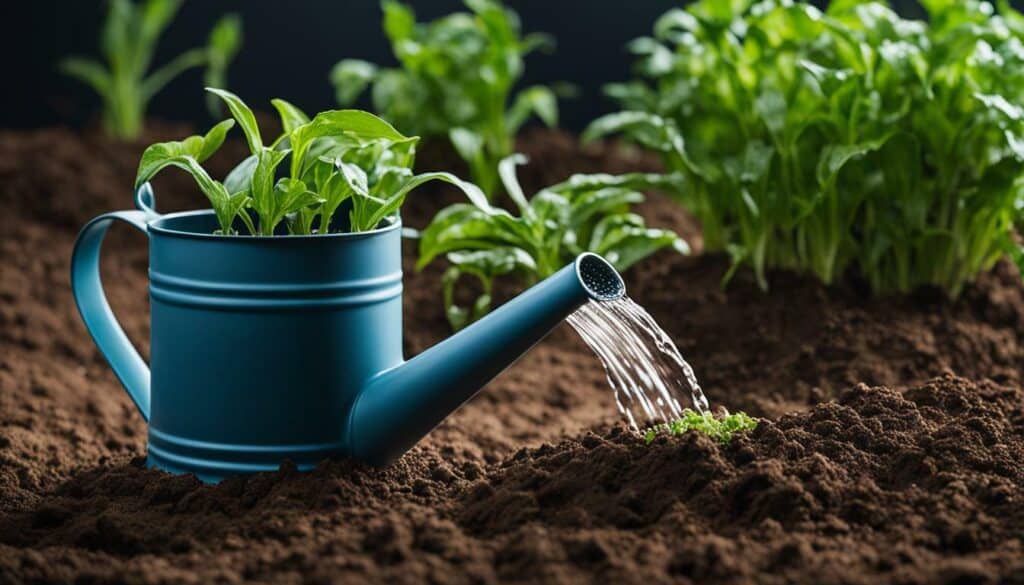
Finally, be patient and enjoy the process of watching your garden grow. With proper watering, nutrient management, and care, your plants will flourish and provide a bountiful harvest. Gardening is a journey, and each step you take will bring you closer to your goals. Happy gardening!
Observing and Caring for Your Plants
To truly nurture your garden, it’s important to spend time observing and caring for your plants. This includes regularly checking for signs of pests or disease, ensuring proper watering and nourishment, and providing support for plants that need it.
Observing your plants regularly will allow you to catch any problems early on. This includes looking for yellowing leaves, discoloration, or spots on the leaves. You should also check for any signs of insects or other pests that may be harming your plants.
Caring for your plants involves providing them with the right amount of water, sunlight, and nutrients. Different plants have different needs, so it’s important to research the specific requirements of each plant in your garden. Overwatering or underwatering can cause plants to die, so it’s important to find the right balance.
Adding organic matter to your soil can provide important nutrients for your plants. This can include compost, manure, or other natural fertilizers. Be sure to follow the instructions carefully and only use as much as recommended.
Staking or providing support for taller plants can also help them grow strong and healthy. This can be done using stakes, cages, or trellises, depending on the type of plant.
Overall, observing and caring for your plants is a crucial part of maintaining a successful garden. With proper care and attention, you can ensure your plants thrive and produce a beautiful bounty of fruits, vegetables, and herbs.
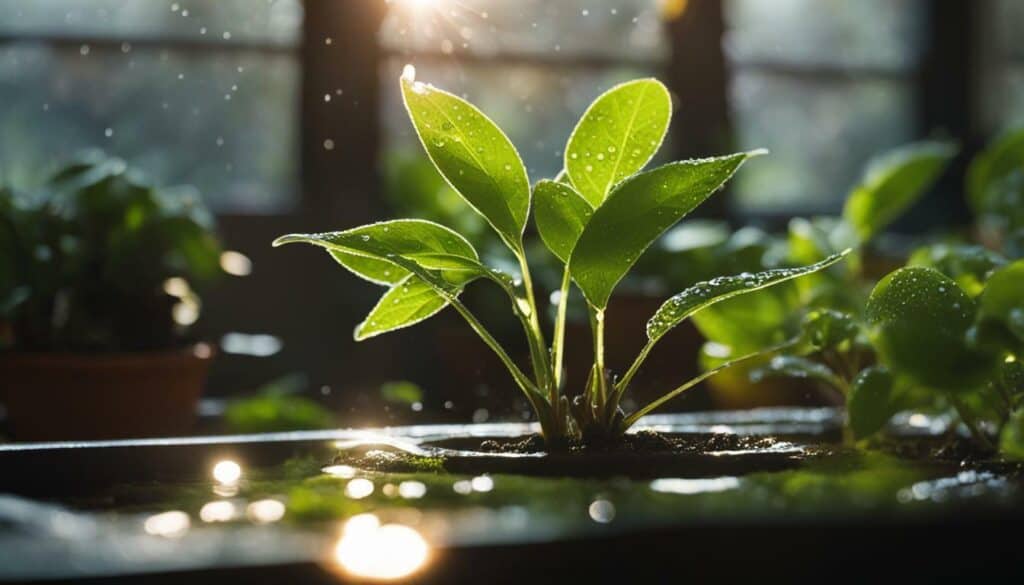
Harvest and Enjoy
The final step in your gardening journey is to harvest and enjoy the bountiful produce from your garden. There’s nothing quite like the satisfaction of picking your own fruits, vegetables, and herbs, knowing that you’ve nurtured them from seed or young plants. It’s also a great way to save money and eat healthier, as homegrown produce is packed with nutrients and flavor.
Make sure to harvest your crops when they are fully ripe, using a pair of sharp scissors or pruning shears. Vegetables like tomatoes, peppers, and cucumbers should be picked when they are firm and fully colored. Leafy greens like lettuce and spinach can be harvested by cutting off the outer leaves as they mature. Fruits like strawberries and raspberries should be picked when they are bright red and easily come off the stem.
Once you’ve harvested your crops, it’s time to put them to use in your cooking. Whip up a fresh salad with your homegrown lettuce, toss some herbs into your pasta sauce, or grill some veggies for a tasty side dish. The possibilities are endless, and the taste of your homegrown produce is unbeatable.
Don’t forget to save some of your harvest for later by canning, freezing, or dehydrating. This will allow you to enjoy your homegrown produce all year round and make the most of your gardening efforts.

Whether you’re a beginner or an experienced gardener, the joy of harvesting and enjoying your own homegrown produce never gets old. So, get out there and start planting today – your taste buds will thank you!
Conclusion
Starting a garden for beginners may seem intimidating, but with the right steps and a bit of enthusiasm, you’ll soon be on your way to enjoying the beauty and satisfaction of a thriving garden. Whether you’re interested in growing vegetables, herbs, or flowers, it’s important to select the right plants for your garden spot and to provide them with the care and nutrients they need to flourish. Consider your personal preferences and the maintenance required for each type of plant before making your selection.
Remember to choose a garden spot that receives 6-8 hours of full sun each day and has easy access to water. Clear the ground of weeds and sod, and test and improve your soil by incorporating organic matter. Prepare your planting beds by tilling or digging, and choose plants that are adapted to your climate, soil, and sunlight. Start planting by sowing seeds directly in the garden or by transplanting young plants.
Water your garden at the correct time using an automatic watering system or a hose, and spend time in your garden each day, monitoring the growth of your plants and addressing any problems that arise. Finally, harvest and enjoy the fruits of your labor, incorporating your homegrown produce into your meals. Whether you choose container gardening, raised bed gardening, or in-ground gardening, with careful planning and attention, you can create a bountiful and sustainable food source.
With these beginner-friendly garden ideas and simple gardening tips, you can find joy and fulfillment in cultivating your own garden. Happy gardening!
FAQ
Q: What should I consider planting in my garden?
A: Consider what you want to plant, whether it’s vegetables, herbs, or flowers.
Q: How do I choose the best spot for my garden?
A: Choose a spot in your yard that gets 6-8 hours of full sun each day and has easy access to water.
Q: How do I clear the ground for my garden?
A: Clear the ground by removing weeds and sod, either by cutting it out or using the lasagna gardening method.
Q: How do I test and improve my soil?
A: Have a soil test done and add organic matter like compost to improve your soil.
Q: How do I prepare my planting beds?
A: Loosen the soil and mix in organic matter to prepare your planting beds.
Q: How do I pick the right plants for my garden?
A: Pick your plants based on your preferences and the growing conditions in your area.
Q: When and how do I start planting?
A: Start planting seeds or transplants according to the planting guide for your region.
Q: How do I water and provide nutrients to my plants?
A: Water your plants at the right time and provide them with the nutrients they need.
Q: How do I observe and care for my plants?
A: Spend time in your garden each day observing and caring for your plants.
Q: How do I harvest and enjoy the fruits of my garden?
A: Harvest and enjoy the fruits, vegetables, and herbs you grow in your garden.
Can I Use Pots to Start a Basic Garden for Beginners?
Yes, you can certainly start a basic herb garden in pots. It’s a great option for beginners as it allows you to control the environment and easily move the pots around. Choose the right size containers, use quality potting soil, and ensure proper drainage. With the right care, your starting a basic herb garden in pots can thrive and provide fresh, flavorful additions to your meals.
Source Links
- https://growinginthegarden.com/gardening-for-beginners-how-to-start-a-garden-in-8-simple-steps/
- https://www.hiddenspringshomestead.com/how-to-start-a-garden/
- https://www.bhg.com/gardening/yard/garden-care/ten-steps-to-beginning-a-garden/
- https://commonsensehome.com/start-a-garden/
- https://shiftingroots.com/10-easy-vegetables/
- https://sebsnjaesnews.rutgers.edu/2020/04/choosing-the-right-location-for-your-vegetable-garden/
- https://www.almanac.com/where-put-vegetable-garden
- https://morningchores.com/vegetable-garden-location/
- https://www.thespruce.com/how-to-start-a-garden-from-scratch-2132778
- https://getbusygardening.com/spring-garden-clean-up/
- https://www.dummies.com/article/home-auto-hobbies/garden-green-living/gardening/vegetables/how-to-test-your-soil-193900/
- https://journeywithjill.net/gardening/2018/10/23/garden-soil-testing-a-beginners-guide/
- https://getbusygardening.com/garden-soil-testing/
- https://www.provenwinners.com/learn/make-your-bed
- https://www.creativevegetablegardener.com/prepping-spring-garden-beds/
- https://getbusygardening.com/prepare-vegetable-garden-for-planting/
- https://www.almanac.com/vegetable-gardening-for-beginners
- https://www.countryliving.com/gardening/garden-ideas/g43413616/vegetable-garden-for-beginners/
- https://www.creativevegetablegardener.com/watering-vegetable-garden/
- https://extension.umn.edu/how/watering-vegetable-garden
- https://simplysmartgardening.com/gardening-101-beginning-gardener/
- https://content.ces.ncsu.edu/home-vegetable-gardening-a-quick-reference-guide
- https://www.thehappychickencoop.com/vegetable-gardening-for-beginners/

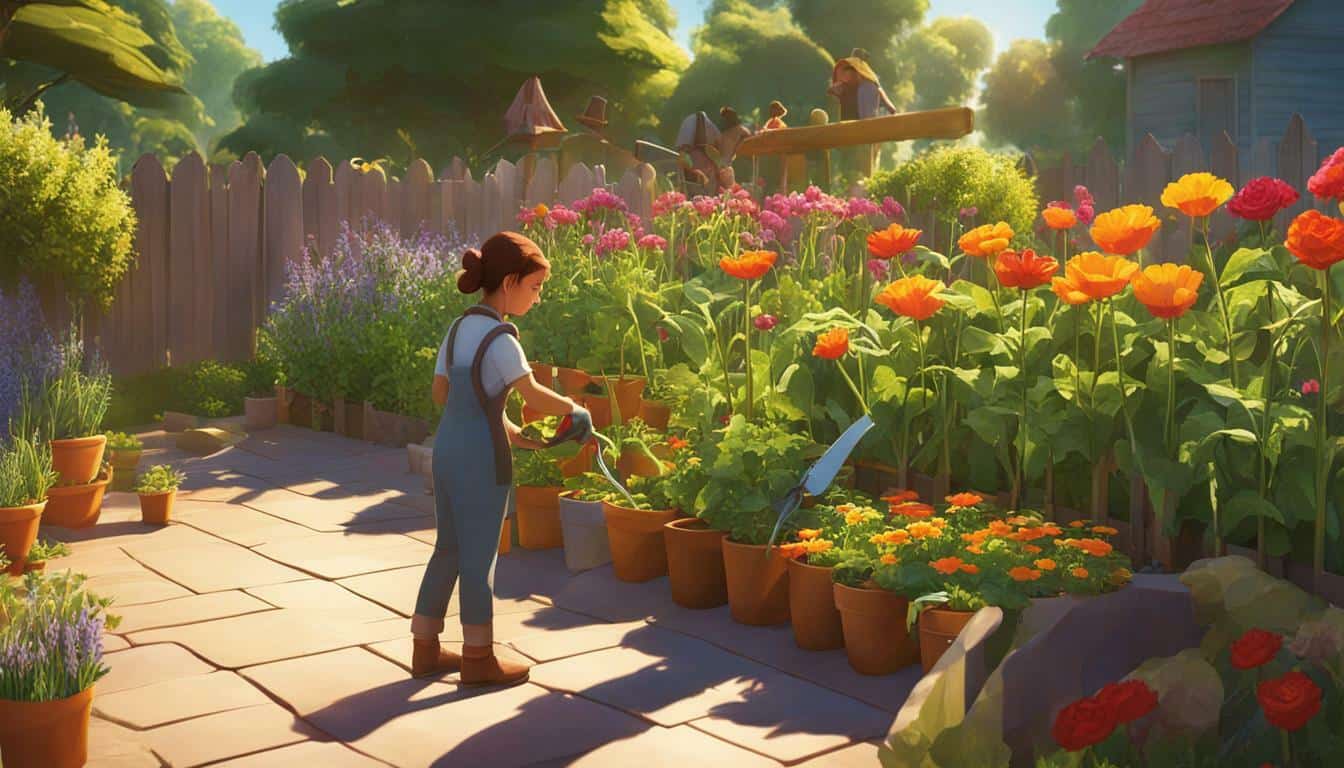



Leave a Reply